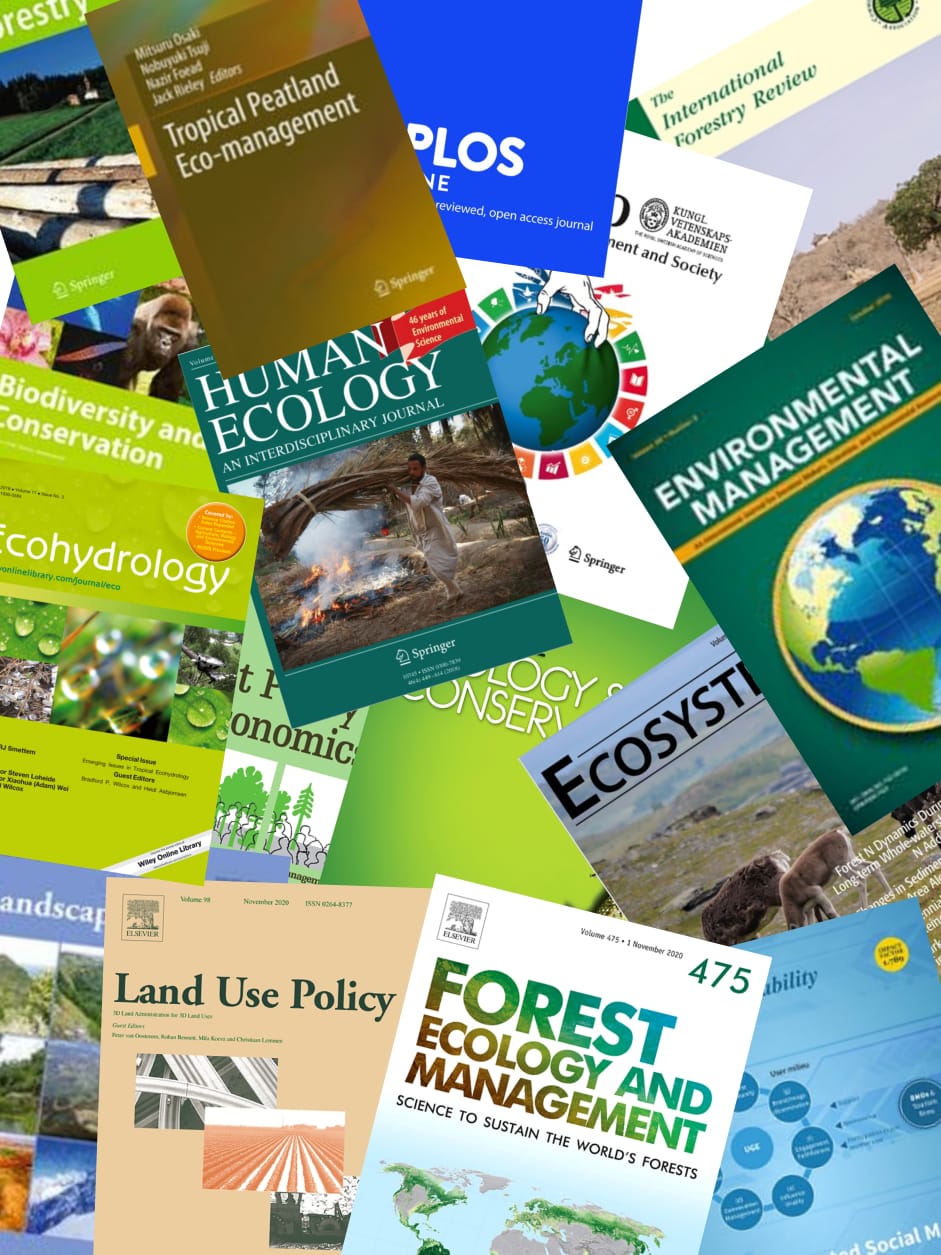Diverse tree species, understory bamboos, shrubs, and herbs in mixed deciduous forests (MDFs) provide not only timber, but also non-timber forest products (NTFPs) in terms of fuel, food, and medicinal plants. Sustainability and the economic value of commercially extracted NTFPs have been studied mainly for the aboveground vegetative components of plants. However, such important knowledge of the underground parts of the plants is limited because of difficulties observing them and lesser consideration of the lower value of NTFPs, compared with timber, in forest management. Here we established allometric models to predict the root and corm biomasses of two plants, Rauvolfia serpentina and Amorphophallus bulbifer, in relation to their aboveground, vegetative parts. Estimated underground biomasses of the two species were compared among three habitat types: a swidden field, a fallow forest after cultivation, and a ridge forest that was not subjected to swidden agriculture. The length of the longest leaf of each individual plant explained the accumulation of the underground biomass of R. serpentina (R2 = 0.64, P < 0.001) in a positive, linear relationship, and stem diameter at ground level did the same for A. bulbifer (R2 = 0.92, P < 0.001). The largest biomass accumulation of R. serpentina was found in swidden fields because of its light demanding nature, which was supported by a significant, negative correlation between canopy cover and leaf length (Pearson's correlation = −0.612, P < 0.05). Because A. bulbifer was cut during weeding time, we could not measure its biomass accumulation in swidden fields; however, its occurrence in swidden fields was confirmed by farmers and field observations. No difference in the biomass accumulation of A. bulbifer was observed between the fallow and ridge forests. The promising growth of both species in the same year that a fire occurred during swidden cultivation suggests that the underground regeneration source provides advantages related to the harvesting of NTFPs and allows them to co-exist with slashing and burning in a swidden system, as well as surface fires in an MDF. Establishment of the two species in fallow vegetation was possibly facilitated by ecological and anthropogenic factors such as the reproductive bulbils of A. bulbifer and the broken root fragments of R. serpentina left after the harvest, as well as the dormancy period of these species during the dry season. This study revealed the cultivation potential of NTFPs that are suitable for community and agroforest plantations using a swidden system in an MDF that experiences fires. © 2017 Elsevier B.V.
View source
Keyword(s)
Amorphophallus bulbifer, Fire-prone environment, Mixed deciduous forest, Rauvolfia serpentina, Swidden fallow, Agriculture, Biomass, Correlation methods, Cultivation, Fires, Forestry, Plants (botany), Reforestation, Sustainable development, Timber, Deciduous forest, Fire-prone environments, Ecology, allometry, bamboo, belowground biomass, biomass allocation, commercial species, dormancy, ecological approach, environmental effect, fire, forest management, growth, growth modeling, harvesting, herb, mixed forest, shifting cultivation, shrub, tree, understory, Biodiversity, Forest Products, Hardwoods, Trees, Bago, Myanmar, Amorphophallus, Bambusa

